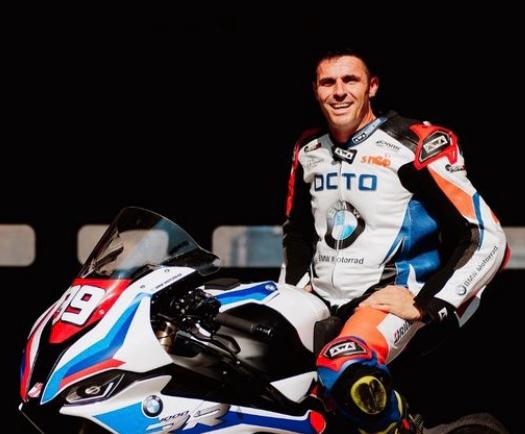Emiliano
As planned, I reach out to Emiliano in the late morning. Emiliano Malagoli serves as the president of Di.Di. In 2011, he lost his right leg following a motorcycle accident. However, fueled by his tenacity, he gradually returned to the racetrack. In 2012, during a race, he crossed paths with Chiara Valentini, a European champion in the 600 class in 2006, who also made a comeback to racing after a 4-year hiatus due to an injury. Their connection led to the birth of the non-profit organisation Di.Di., with the purpose of enabling others with disabilities to embark on a similar journey. It’s somewhat, albeit in a scaled-down form, the same philosophy as this diary.
We discuss the upcoming Saturday event, and I express my admiration for the impactful work they are carrying out. However, it’s time to address the matter of the Special A license. He immediately cautions me that it won’t be a straightforward process and that there will be a need to endure challenges and show resilience. Due to bureaucratic delays and institutional indifference, it’s often more convenient for them to say “no” outright than to invest time in evaluating each case. He adds that my condition poses a slightly more complicated scenario than usual because the committees at Motorizzazione Civile are more inclined to grant licenses to disabled individuals with functional deficiencies in the lower limbs rather than the upper limbs. Furthermore, he advises me to consider a motorcycle with an automatic or semi-automatic transmission. The rationale is that the devices to be operated with a single arm are already numerous, and adding the concern of managing a manual gearbox might not be advisable. Nonetheless, he outlines two potential paths: one with higher success rates, and the other, in case the first one proves unsuccessful, with reduced percentages. However, he assures me that the decision between the two paths can be considered at a later stage.
The initial step on the more favourable path involves scheduling a visit with an accredited orthopaedic doctor in Bologna. If the doctor provides a positive assessment, he will prescribe a custom exoskeleton. This device will be crucial for fixing the evaluation visit with the Motorizzazione committee, aimed at obtaining the provisional license known as the “foglio rosa”. Once this hurdle is overcome, there’s a year available to take the exam. During this period, necessary driving exercises with an adapted motorcycle will be undertaken. Emiliano recommends that I reach out to the doctor promptly since he plans to meet him the following day. I express my gratitude, and we part ways with the commitment to stay in touch.
I write to the orthopaedic doctor, and he promptly responds. Before scheduling the visit, he would like to review videos to assess the mobility and strength of my left arm engaged in a couple of manoeuvres. I respond that I will create the videos as soon as possible. In reality, I still have to wait. Partly because I haven’t fully recovered physically after chemotherapy, and partly because the date of the surgical procedure is approaching, which will necessitate at least three months of recovery. However, it’s merely a delay; the battle has only just begun.
